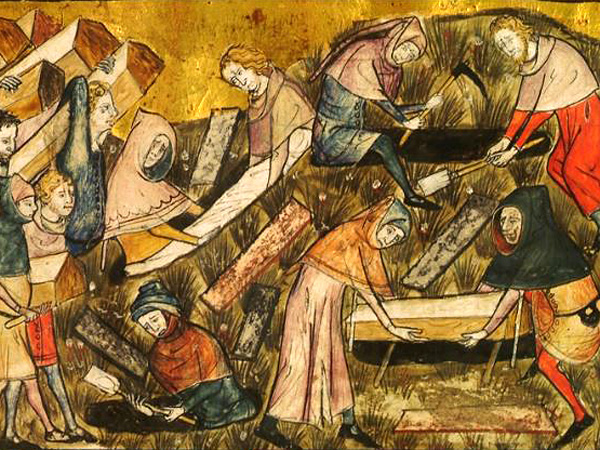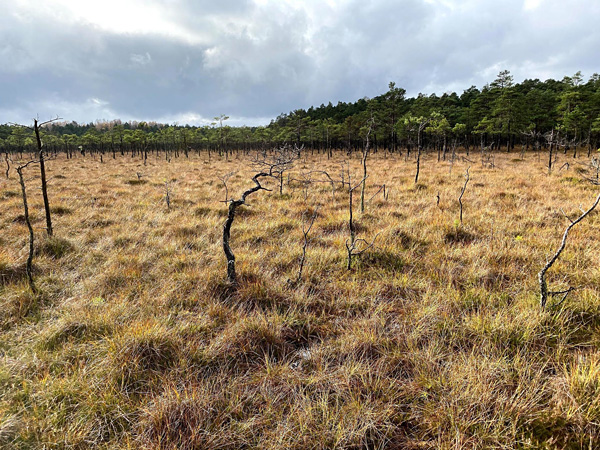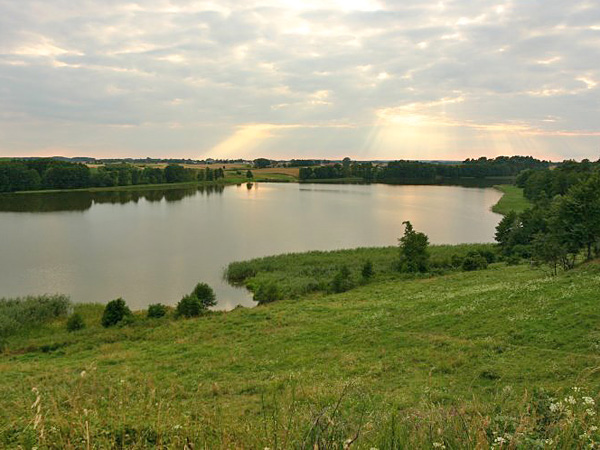Palynology verifies the findings of historians on the impact of the Black Death on the demographics of medieval Europe!
The bacterium Yersinia pestis, the causative agent of the bubonic plague, was the cause of the most infamous pandemic in the history of Latin civilization, known as the "Black Death". Based on written sources, historians estimate that one of the waves of this pandemic, sweeping through Europe in 1347–1352, could have killed up to half of the continent's population. The results of a study using palynological data, published in the March issue of Nature Ecology & Evolution, shed new light on these estimates.
The authors of the publication – scientists from many, mainly European, research centres, including the Max Planck Institute for the Science of Human History (the place of affiliation of the team leader, Adam Izdebski) and the W. Szafer Institute of Botany PAS (represented by Agnieszka Wacnik) – analyzed 1634 samples of fossil pollen from 261 radiocarbon-dated sites (lakes and peat bogs) all over Europe (in 19 modern countries). The pollen profiles revealed that there were significant changes in the species composition of plant communities during the pandemic period. Taxa associated with intensive agriculture disappeared, giving way to taxa associated with less intensive land use (e.g. herding) or even the absence of such use. In other words, the agricultural landscape was turning semi-natural and natural, which must have been the result of a significant reduction in the human population due to the Black Death's passage. What surprised the researchers was the fact that many pollen profiles did not contain a signal indicating that nature was temporarily released from human pressure. This means that the pandemic was not taking its death toll everywhere, and therefore its impact on Europe's demographics was less than previously thought.
The discrepancies between the findings of historians and palaeoecologists probably result from the fact that the former rely on written sources, i.e. data from a part of Europe that was culturally more developed, but also more plagued by the pandemic, e.g. due to the high population density. Palaeoecological data do not have such limitations, what is more, they often give a general picture for entire regions, therefore they are a valuable source of information about changes in the landscapes of past epochs.
You can read more about the research results on this page.
See also the original article:
Izdebski A., Guzowski P., Poniat R., Masci L., Palli J., Vignola C., Bauch M., Cocozza C., Fernandes R., Ljungqvist F.C., Newfield T., Seim A., Abel-Schaad D., Alba-Sánchez F., Björkman L., Brauer A., Brown A., Czerwiński S., Ejarque A., Fiłoc M., Florenzano A., Fredh E.D., Fyfe R., Jasiunas N., Kołaczek P., Kouli K., Kozáková R., Kupryjanowicz M., Lagerås P., Lamentowicz M., Lindbladh M., López-Sáez J.A., Luelmo-Lautenschlaeger R., Marcisz K., Mazier F., Mensing S., Mercuri A.M., Milecka K., Miras Y., Noryśkiewicz A.M., Novenko E., Obremska M., Panajiotidis S., Papadopoulou M.L., Pędziszewska A., Pérez-Díaz S., Piovesan G., Pluskowski A., Pokorny P., Poska A., Reitalu T., Rösch M., Sadori L., Sá Ferreira C., Sebag D., Słowiński M., Stančikaitė M., Stivrins N., Tunno I., Veski S., Wacnik A., Masi A. 2022. Palaeoecological data indicates land-use changes across Europe linked to spatial heterogeneity in mortality during the Black Death pandemic. Nature Ecology & Evolution 6: 297–306. DOI

A fourteenth-century miniature showing the people of Tournai burying victims of the Black Death.
Source: Wikimedia Commons.

Bagno Kusowo peatland – one of best preserved Baltic raised bogs in N Poland. The site possesses an exceptional multi-proxy record of fires frequency and vegetation change in the last millennium.
Photo: Mariusz Lamentowicz.

Lake Wojnowo in Masuria – another site that was a source of palynological data from Poland.
Photo: Agnieszka Wacnik.





